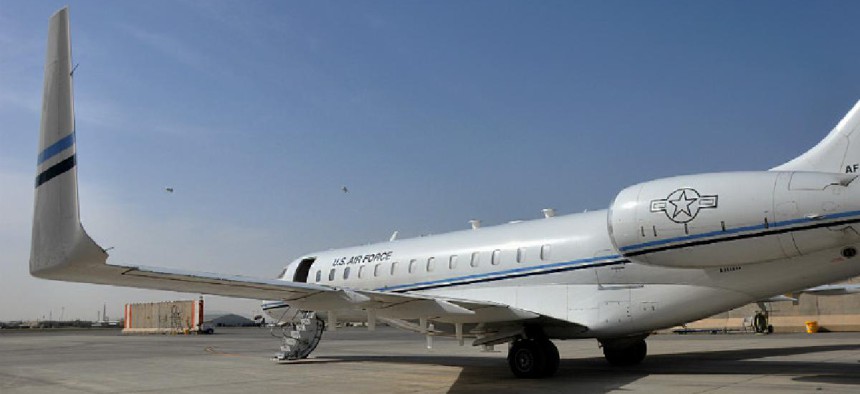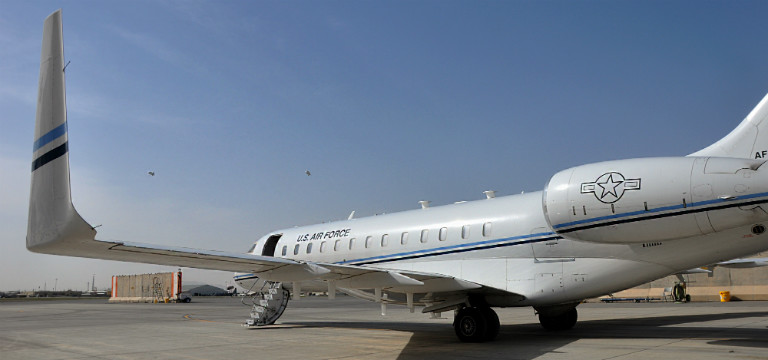High-tech communications aircraft crashes in Afghanistan

The U.S. military is investigating the cause of the crash of a highly specialized communications aircraft in Afghanistan's Ghazni Province.

An E-11A aircraft on the runway at Kandhar Airfield in Afghanistan. (Photo credit: Capt. Anna-Marie Wyant/USAF)
A high-tech Air Force jet crashed Jan. 27 in Afghanistan's Ghazni province. There's no word yet on the number of people aboard or casualties; photographs and video of the wreckage were circulated on social media. Taliban in control of the Deh Yak district where the crash took place said that the aircraft was brought down by its own forces -- claims denied by the U.S. military.
"While the cause of crash is under investigation, there are no indications the crash was caused by enemy fire," Col. Sonny Leggett, a spokesperson for U.S. Forces in Afghanistan, said in a statement. "We will provide additional information as it becomes available. Taliban claims that additional aircraft have crashed are false."
The plane was an Air Force E-11A, one of four modified executive jets that fly at high altitude and carry a sophisticated and powerful communications system called Battlefield Airborne Communications Node, or BACN. Used only in Afghanistan, the BACN system is designed as a workaround to the complexities of long-range communication caused by the rough and mountainous terrain.
It also operates as a kind of interoperability processor that can translate targeting and intelligence data across different weapons systems and aircraft platforms that aren't designed to work together. BACN "is like Wi-Fi in the sky," U.S. Air Force Capt. Jacob Brett was quoted as saying in an Air Force public affairs publication in November 2018.
The BACN capability was put into development in the wake of the 2005 Operation Red Wings, in which 19 U.S. special forces troops were killed. In that operation, a four-person SEAL team was unable to communicate effectively with its base via radio or satellite phone. The BACN capability, which is designed to remain aloft and in operation 24/7, routes communications and can keeps links up even with satellites are out of range or the terrain inhibits radio transmission.
In a 2017 interview with the blog War Zone, BACN program director Lt. Col. Timothy Helfrich explained that in addition to providing a kind of communications blanket for a large swath of rugged territory, the system also helps translate data between older and newer generation F-16 aircraft and other systems.
"BACN has the ability to basically automatically translate between the two data link systems and between those networks," Helfrich said. "We can push all the information from an A-10 or an older F-16 that has [Situational Awareness Data Link] and push it to an F-15 or a newer F-16 or even an F-18, making sure that they have the largest amount of data for the situation they're entering."
BACN is also deployed on the EQ-4B aircraft – a modified Global Hawk unmanned aerial system.



